Intro:
If you’re accessing this podcast, you’ve already listened to Rounders: A History of Baseball in America, our main show, and signed up as an exclusive email subscriber. Thanks so much for continuing to support both of these projects.
Note: I was honored to join Ben Orlando on his “Midnight Library of Baseball” show for an interview. We discussed what makes baseball different from other sports and why we love it. We also discussed cultural shifts that have affected the game and some of our favorite all-time baseball books.
You can listen to the episode here, and I recommend checking out the show in general - he has some excellent topics!
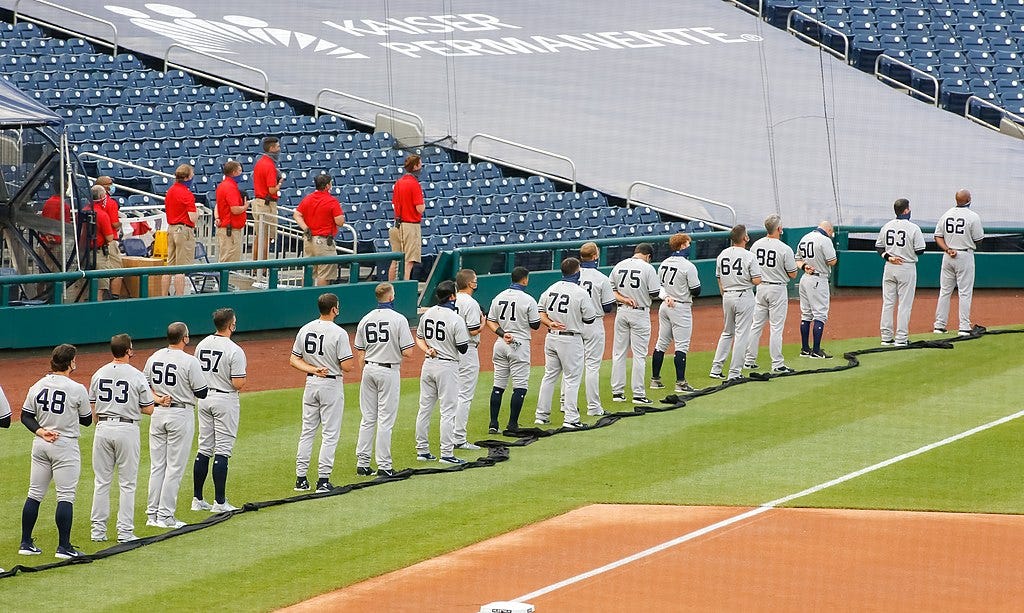
January 22, 1929 - The Yankees Put Numbers on the Backs of Their Uniforms
The decision by the New York Yankees to put numbers on the backs of their uniforms on January 22, 1929, marked a significant moment in baseball history. This move made the Yankees the first team to continuously use numbers, which would soon become standard across the sport. The initial assignment of these numbers was based on the players’ positions in the batting order.
Two of the most iconic players of the time, Babe Ruth and Lou Gehrig, were assigned numbers 3 and 4, respectively.
By 1931, all American League (A.L.) teams had adopted uniform numbers. It took a bit longer for the National League (N.L.) to follow suit, with all players being numbered by 1933. This practice has continued today, with players’ numbers often becoming synonymous with their identity in the sport.
The Yankees’ decision to number their players’ uniforms was a pioneering move that has had a lasting impact on baseball. It not only helped fans and commentators keep track of players during games but also added a new dimension to players’ identities, with certain numbers becoming iconic in their own right.
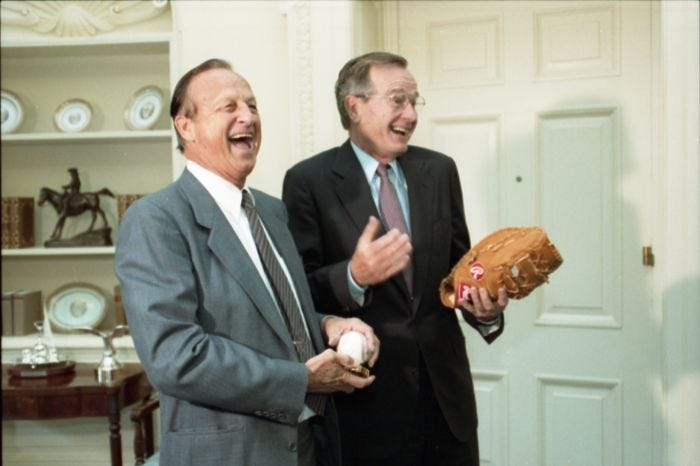
January 23, 1967 - Stan Musial is named General Manager of the St. Louis Cardinals.
Stan Musial, one of the greatest players in the history of baseball, was named the General Manager of the St. Louis Cardinals on this date. This appointment came as a surprise, as Musial had been serving as a vice president with the Cardinals from 1963 through 1966.
Stan "The Man" Musial, born Stanislaw Franciszek Musial, was an American baseball outfielder and first baseman. He spent his entire 22-year playing career with the St. Louis Cardinals, from 1941 to 1944 and from 1946 to 1963.
Musial is considered one of baseball's greatest and most consistent hitters. He was selected to 24 All-Star games and is the franchise's career leader in virtually every batting category.
During his tenure as the General Manager in 1967, the Cardinals won the World Series. However, Musial's stint as the General Manager was short-lived.
His business partner died during that season, prompting Musial to leave the game afterward. Despite his brief tenure, Musial's impact as a General Manager was significant, demonstrating his versatility and commitment to the sport.
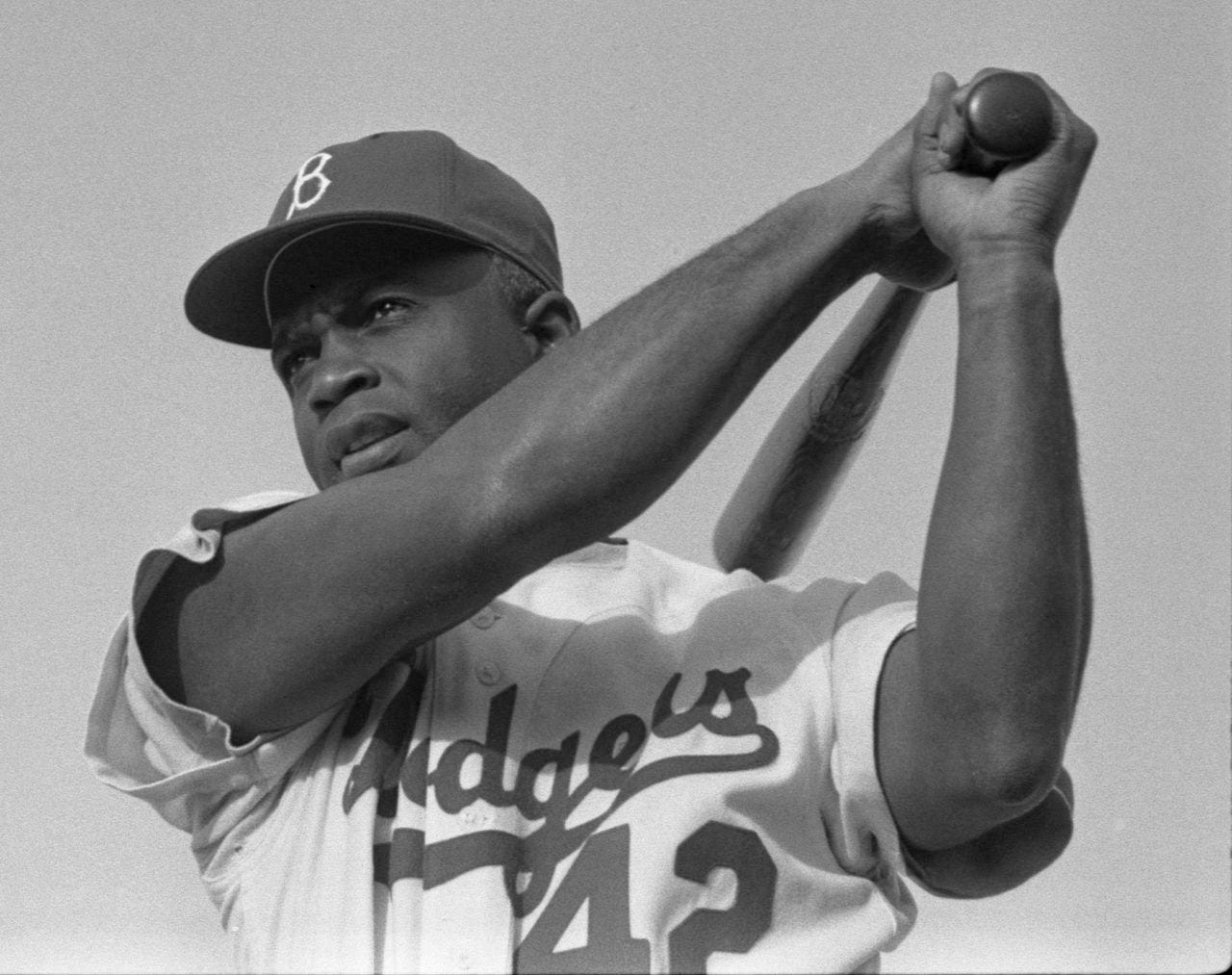
January 24, 1950: Jackie Robinson Becomes the Highest-Paid Dodger of All-Time
This day marks the moment Jackie Robinson signed a contract with the Brooklyn Dodgers for $35,000. This contract made him the highest-paid player in the team's history at that time.
The contract Robinson signed in 1950 was a significant increase from his initial contracts.
His first contract in 1945 with the Kansas City Monarchs in the Negro leagues was worth $400 per month.
In 1947, when he moved to the Major Leagues, his contract was $600 per month.
In 1948, he signed a contract worth $12,500.
The 1950 contract worth $35,000 would be about $425,712 today when considering inflation.
Jackie Robinson's 1950 contract demonstrated a shift in the recognition and remuneration of African American players in the sport.
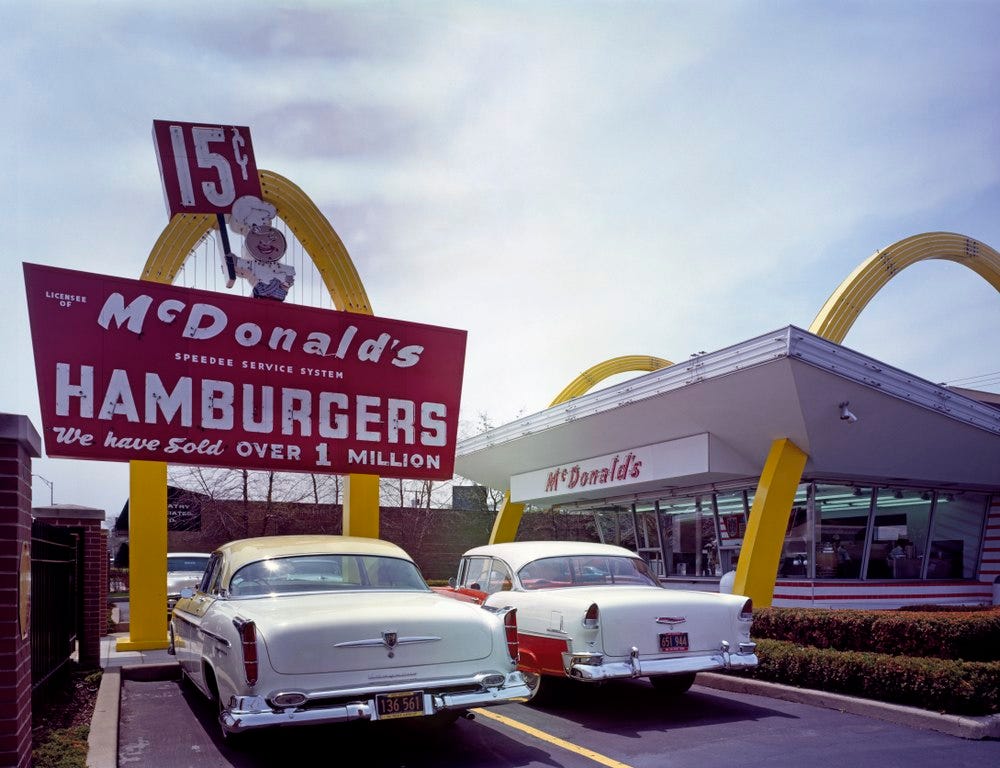
January 25, 1974 - The Owner of McDonald's Buys the San Diego Padres
Ray Kroc, the fast-food entrepreneur known for McDonald's, purchased the San Diego Padres for $12 million. This marked a significant event in the history of both Major League Baseball and Kroc's career.
Ray Kroc, born Raymond Albert Kroc, was an American businessman who is credited with the global expansion of McDonald's, turning it into the most successful fast food corporation in the world by revenue. He purchased the fast food company in 1961 from the McDonald brothers and was its CEO from 1967 to 1973.
Kroc had just retired from the fast-food industry when he learned the Padres were up for grabs. His purchase of the Padres came after his successful tenure at McDonald's, and he spent $12 million of his approximated $500 million net worth in 1974 to purchase the Padres. His first order of business was to restructure the lease on San Diego Stadium.
Despite the Padres' lackluster performance at the time, Kroc was enthusiastic about his new venture. During the first home game under his ownership, he received a standing ovation from the crowd and proclaimed, "With your help and God's help, we'll give 'em hell tonight."
However, Kroc was not shy about expressing his disappointment when the team was not performing well.
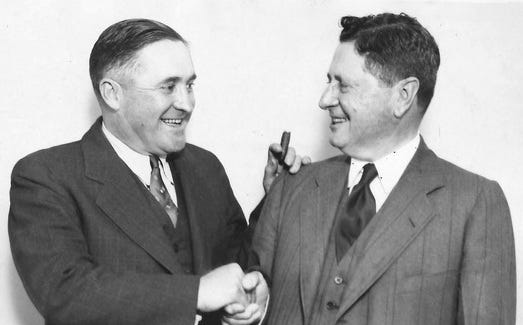
January 26, 1932: Chicago Cubs Owner William Wrigley Dies at Age 70
William Wrigley Jr., the owner of the Chicago Cubs, passed away at the age of 70. His death occurred at his mansion in Phoenix, Arizona.
William Wrigley Jr. was a prominent American businessman, best known as the founder of the Wm. Wrigley Jr. Company in 1891. He started his business selling soap and baking powder, but soon realized that the chewing gum he offered as a premium was more popular than his base product. This led him to concentrate on the manufacture and sale of chewing gum, a business in which he made his name and fortune.
In 1916, Wrigley bought a minority stake in the Chicago Cubs baseball team. His ownership of the Cubs was part of his diverse business interests, including significant developments on Santa Catalina Island, California.
Wrigley's death was reportedly due to acute indigestion complicated by a heart attack and apoplexy. He was interred in his custom-designed sarcophagus in the tower of the Wrigley Memorial & Botanical Gardens near his beloved home on California's Catalina Island.
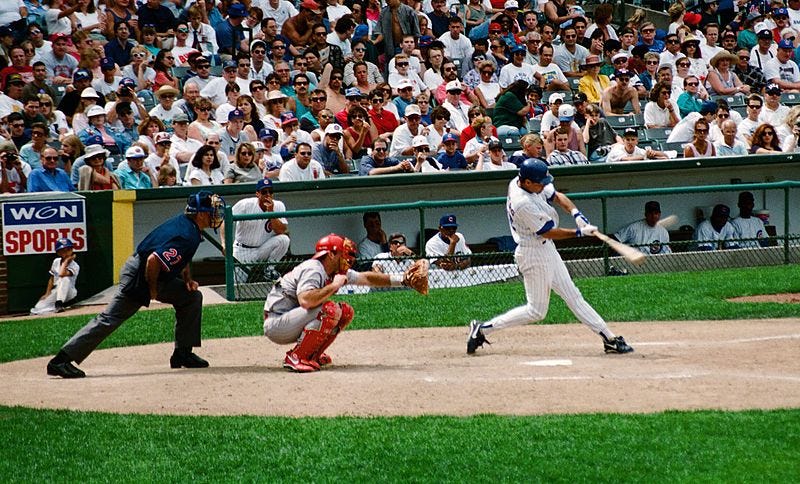
January 27, 1982: The Chicago Cubs Acquire a Future HOF’er and a Perennial All-Star
The Chicago Cubs took advantage of a widely lopsided trade with the Philadelphia Phillies on this date. The Cubs acquired infielders Ryne Sandberg and Larry Bowa in exchange for shortstop Ivan DeJesus.
The trade was initially seen as a simple swap of shortstops. However, the trade would reshape the Cubs' future in ways Chicago fans could never have imagined.
Dallas Green, who had previously managed the Phillies to the 1980 World Series title and was the current Cubs’ general manager at the time, reportedly refused to make any deal unless Sandberg was part of the package. This should have been a red flag for the Phillies about how valuable the young infielder was.
Larry Bowa, who was traded along with Sandberg, was quoted as saying, "Never mind me, I can’t believe the Phillies gave up Sandberg."
In retrospect, the trade is considered one of the worst in history for the Phillies.
Sandberg quickly became one of the most beloved and successful players in Cubs history, posting a .285 batting average with 282 home runs, 1,061 RBIs, and 344 stolen bases. He was inducted into the Hall of Fame in 2005.
Bowa was a perennial all-star, a master with the glove and a solid baserunner - even if he was in the twilight of his career at the time of the trade. He spent 12 of his 16 MLB seasons in Philadelphia and has gone down as one of the best shortstops in Phillies history. His loss was a crushing blow to the morale of the local fans.
DeJesus had a decent career as he became known as a durable, serviceable shortstop for the Phillies. He made two World Series appearances during his career - one with Philly and one with St. Lous. His accomplishments just couldn’t hold a candle to what Chicago got back with Sandberg and Bowa in this trade.

January 28, 1907: The AL and NL Show the First Signs of Working Together
A significant meeting took place between Harry Pulliam, the President of the National League, and Ban Johnson, the President of the American League on this date. The purpose of this meeting was to reduce the number of conflicting playing dates between their leagues.
Harry Pulliam was an American baseball executive who served as the sixth President of the National League from 1903 until his death in 1909. He was president during the period in which the National League and the fledgling American League settled their hostilities and formed a National Agreement which led to the creation of the World Series.
Ban Johnson, on the other hand, was an American executive in professional baseball who served as the founder and first president of the American League. Johnson developed the American League into a "clean" alternative to the National League, which had become notorious for its rough-and-tumble atmosphere.
The meeting between Pulliam and Johnson was successful, and they were able to reduce the number of conflicting dates to 27. This was a significant achievement as it helped to streamline the scheduling of games, reducing overlap and potential conflicts.
This meeting marked a step towards greater cooperation between the two leagues, setting a precedent for future collaboration.
Hold on a Second!
Would you consider becoming a paid subscriber?
You get:
The ad-free version of 'Rounders' a whole DAY EARLIER.
A sneak peek at our secret list of upcoming episodes.
A chance to share your thoughts, which I might just read out in the episode.
Exclusive chats, events, and more fun stuff only for our members.
And if you're feeling extra awesome, join our 'Starting Nine' crew. Help shape the show, pick episode topics, and even get a shoutout as a producer.
Let's make 'Rounders' the top baseball history show together!





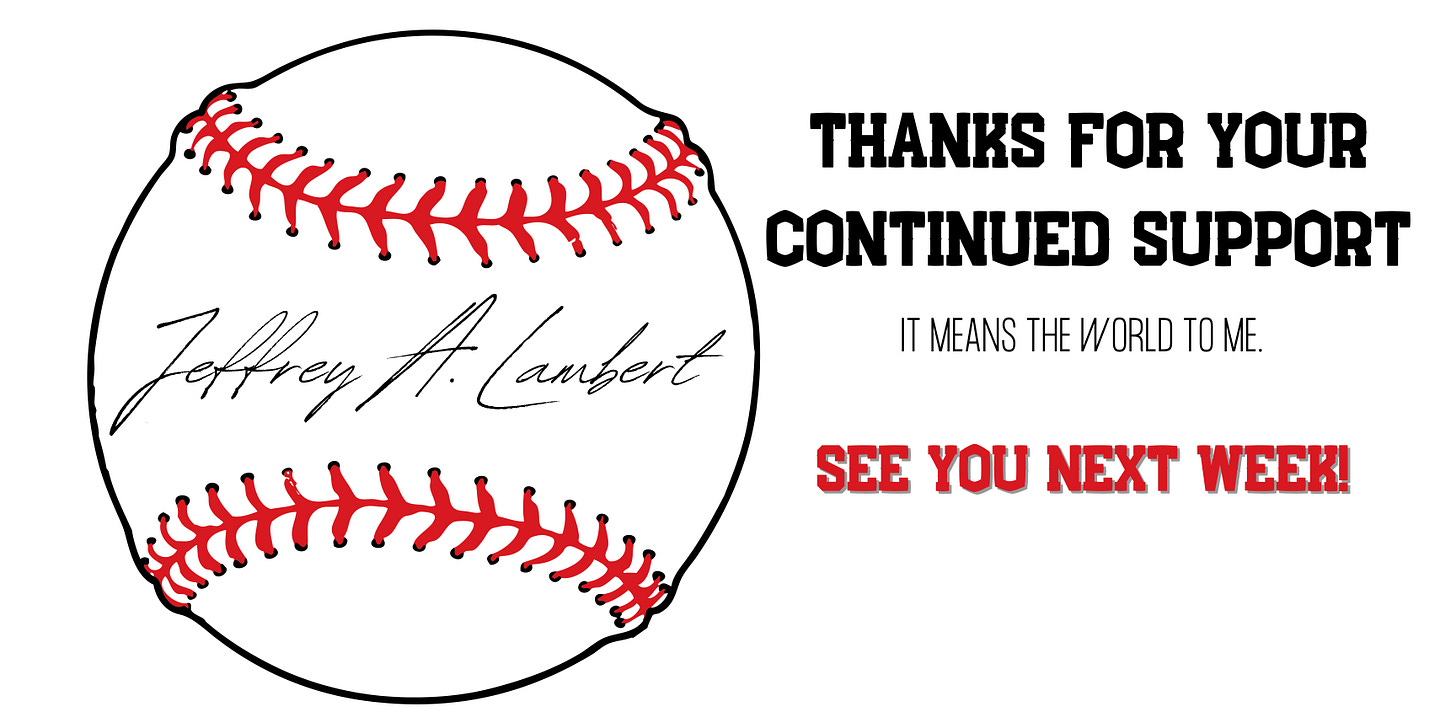



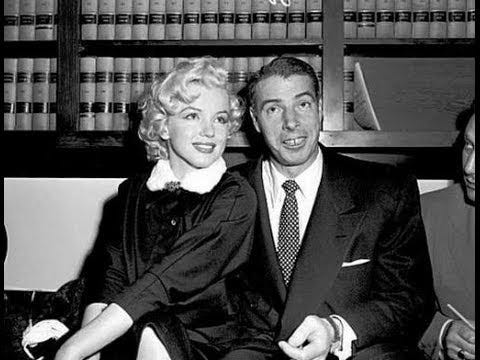
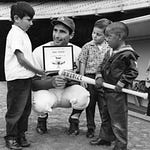

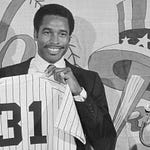
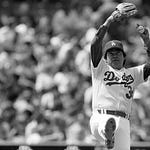

Share this post